Orach is a fantastic and ornamental spinach substitute which holds longer than its aforementioned taste / cooking cousin. It's elegant colours ranging from golden green to deep purple, with complenentary towering seed stalks by the end of summer, make it so desireable that I like to call spinach an orach substitute. I have several varieties in my garden but I don't isolate so there are likely to be crosses. If you would like some seed of my garden's yellow/green/magenta and bronze orach mix then email me.

Cute Ruby Mountain Orach seedling. Can't find my field 'o' orach picture at the moment but they merrily grow in and around a purle lace elderberry bush in my garden making a nice contrast and complement in yellows, greens and bronze.
I believe the two types I am growing are both Indian mustards or Brassica juncea (has anyone seen my memory, I left it around here somewhere). I have a mix that may be red stemmed, red leaved, large or crumpled leaf types varying in hottness. This is a very early green that tastes great when used to spice up a salad or in stirfry. Substitute it for part of the 'spinach' you would use in another recipe to give it a new kick. My original seed was Osaka Purple and Wild Garden Seed mix. If you would like a small baggy of mustard seeds, email me.
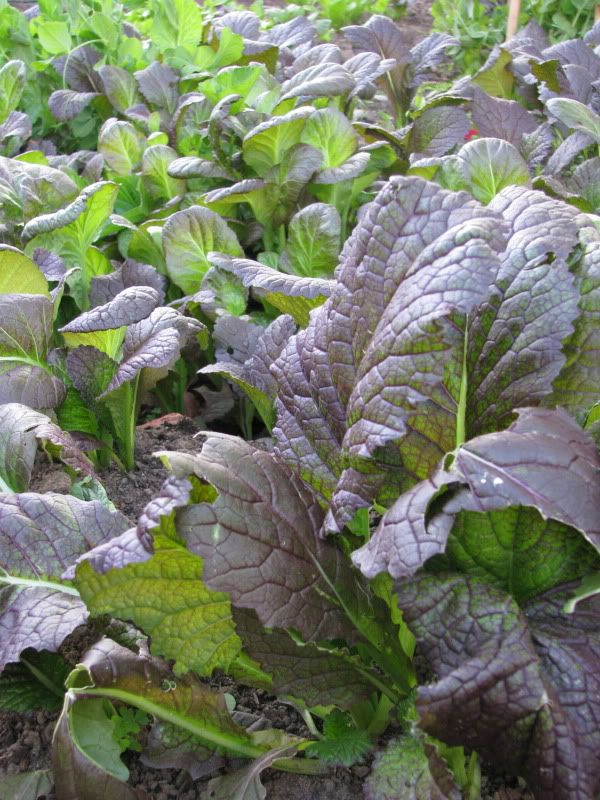
A field of self sown Osaka Purple mustard. P.S. A poster pointed out to me that someone let their mustard go to seed in a public garden and that not everyone appreciated having bushels of these pugnent plants so caution is advised ;) They are easy to remove if you have too many.
***
Saving small bunches of Brassica seeds
- mustard in this case - my handy* tutorial.
Step 1: After removing the early bolters or off types, let it flower and seed
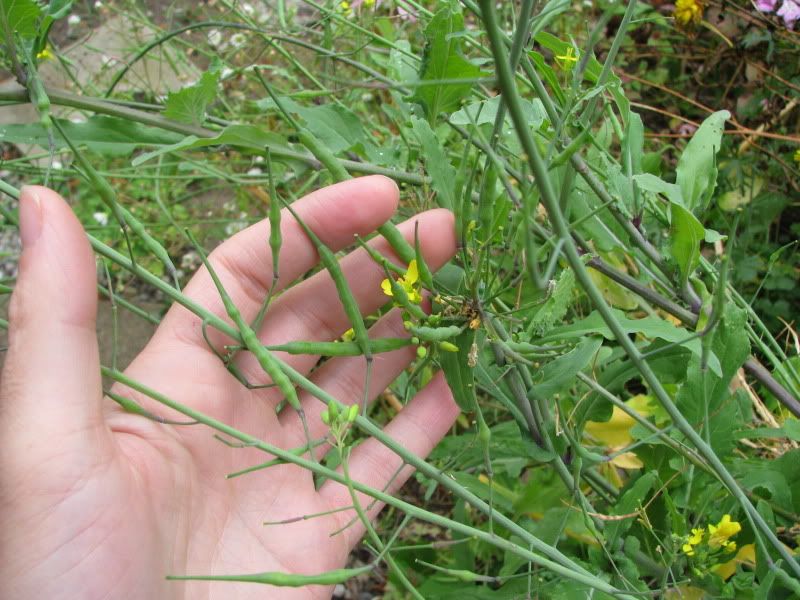
A typical yellow mustard flower and plump green seed pods - incidentally, the pods are edible. The most known type of edible brassica seed pod is on the rattail radish.
Step 2: Once the seed pods are dry and tan coloured, cut off whole stems but careful not to shake them, the pods shatter easily. Other writers note that it is really important that the seed pods dry on the growing plant as they don't continue to ripen well once removed. Also try to get keep them dry during ripening.
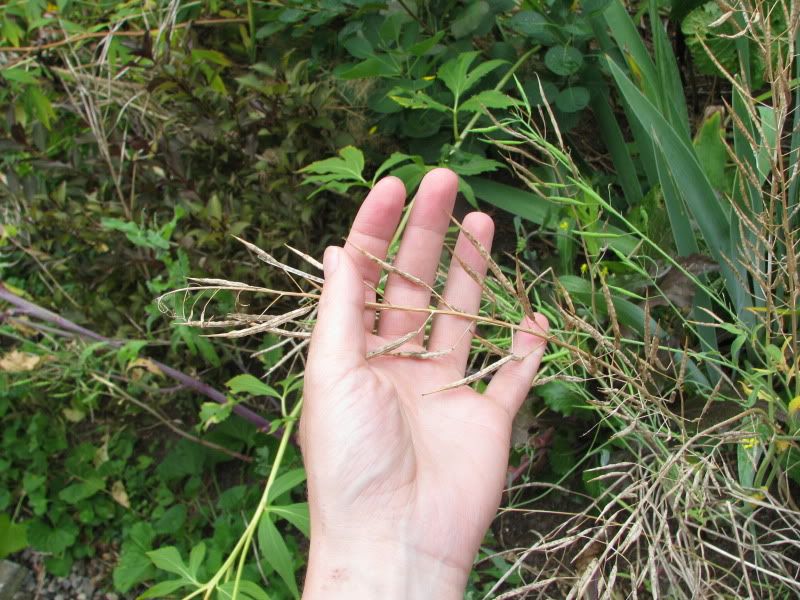
Step 3: Put seed pods in large bowl and crush them in your hands, the seeds will slide to the bottom.
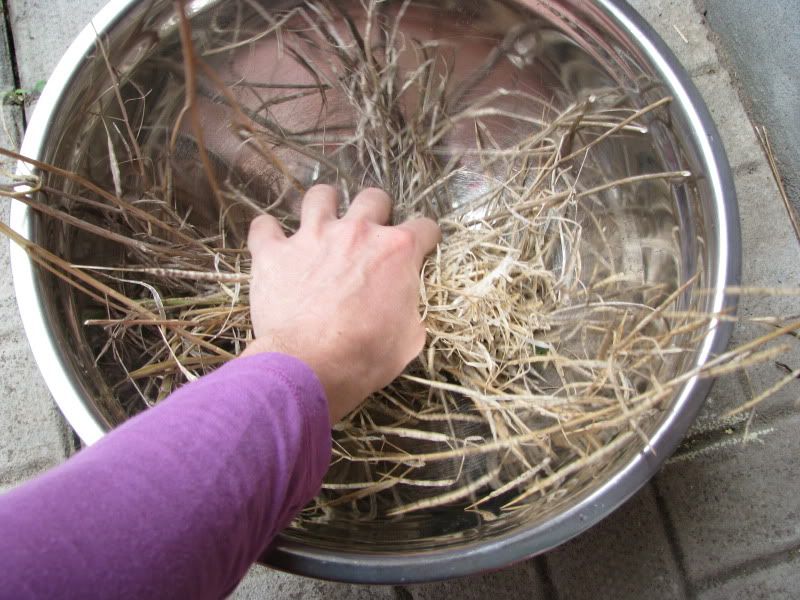
Step 4: Remove the chaff that'll mostly be on top of the seeds - that's the extra stuff that's not a lovely reddish brown to black seed.
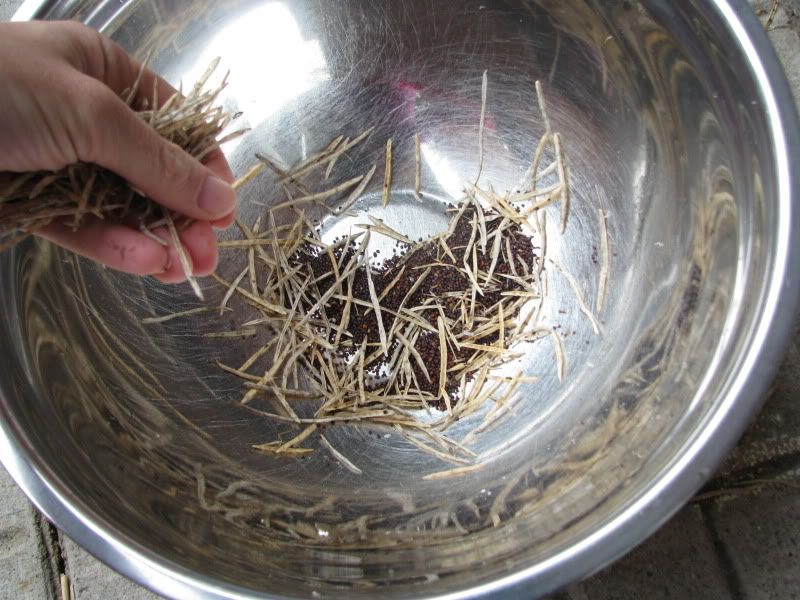
Step 5: Bag and label - TADA!
* Get it, handy? Notice how my hand is in most of the pictures... I thought I'd make them action shots.
Irish Seed Savers on saving Brassica seeds
Long Island Seed Savers on saving Broccoli seeds - with notes on fungal diseases

3 comments:
I got the joke. Still, how Tat Soi seed got in with my Siberian Kale is a mystery. They must have gone to seed right next to each other and I didn't notice there were two. Bizarre.
They both look just right, though.
Lovely post! Do you know whether you can send me seeds here in the US? And vice versa? I would love to try your mustard, and maybe some of the golden orach, too--I love the purple "ruby" one in my garden. :)
If you have asked for seeds, you should receive them shortly.
Post a Comment